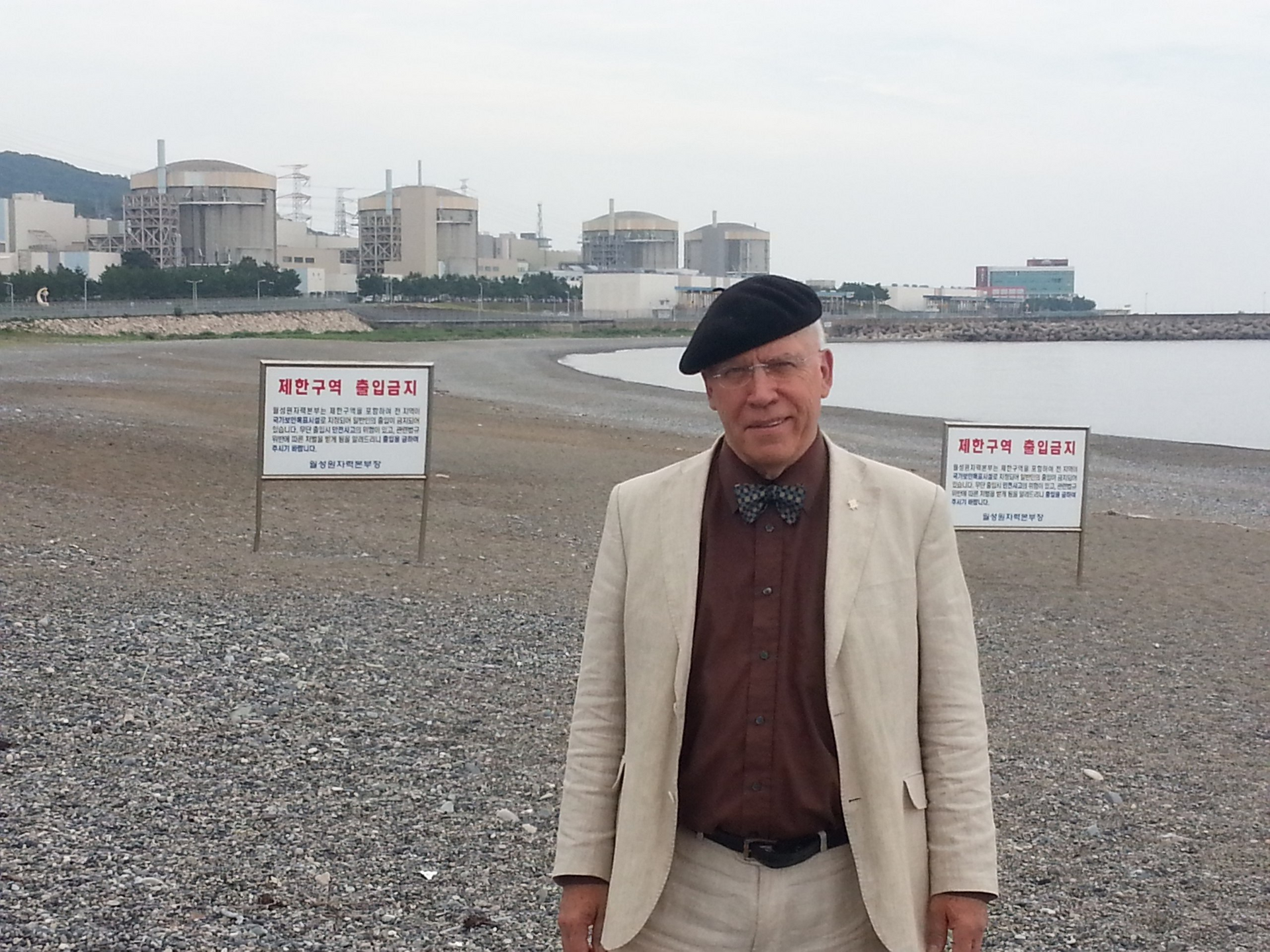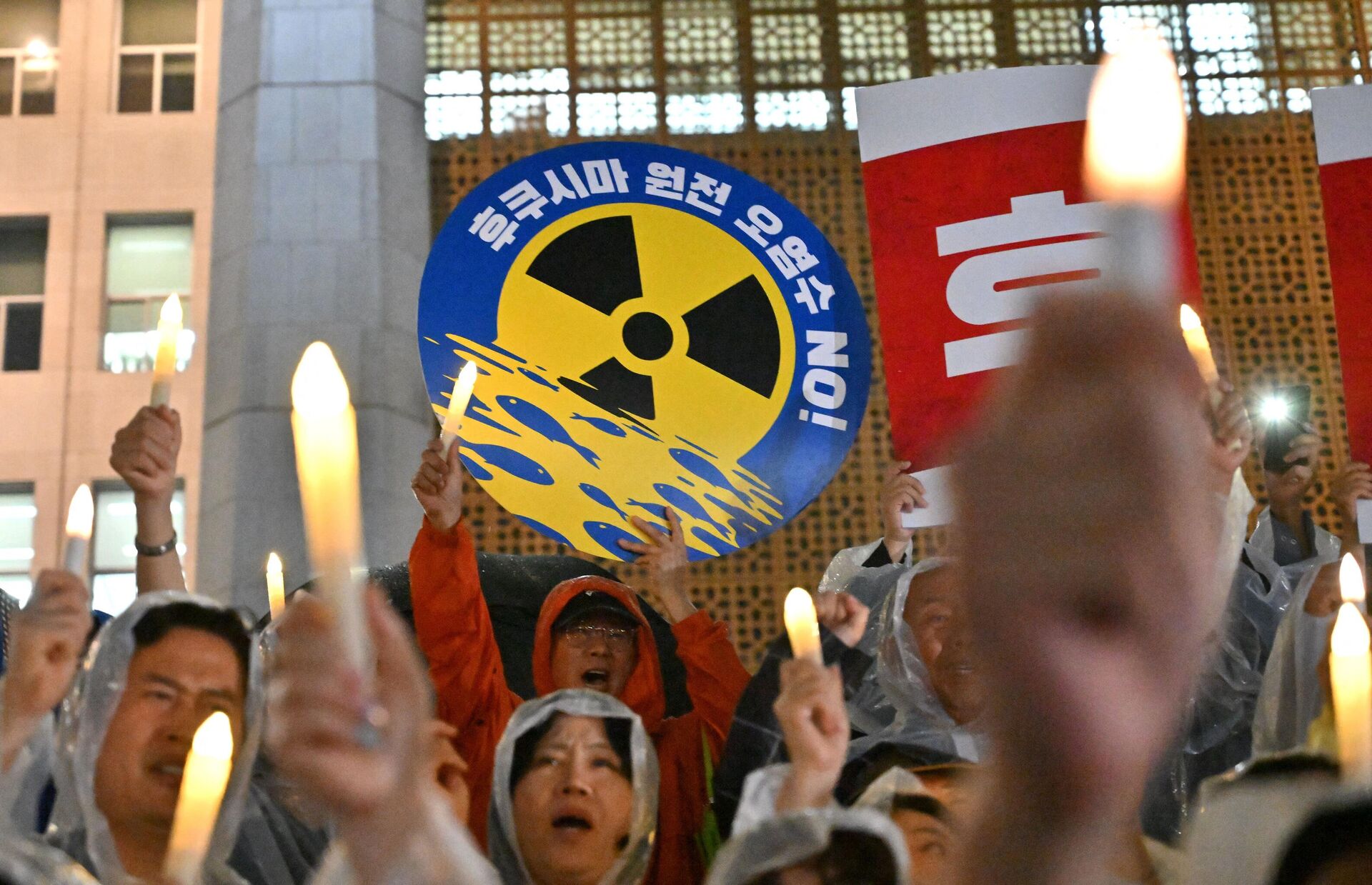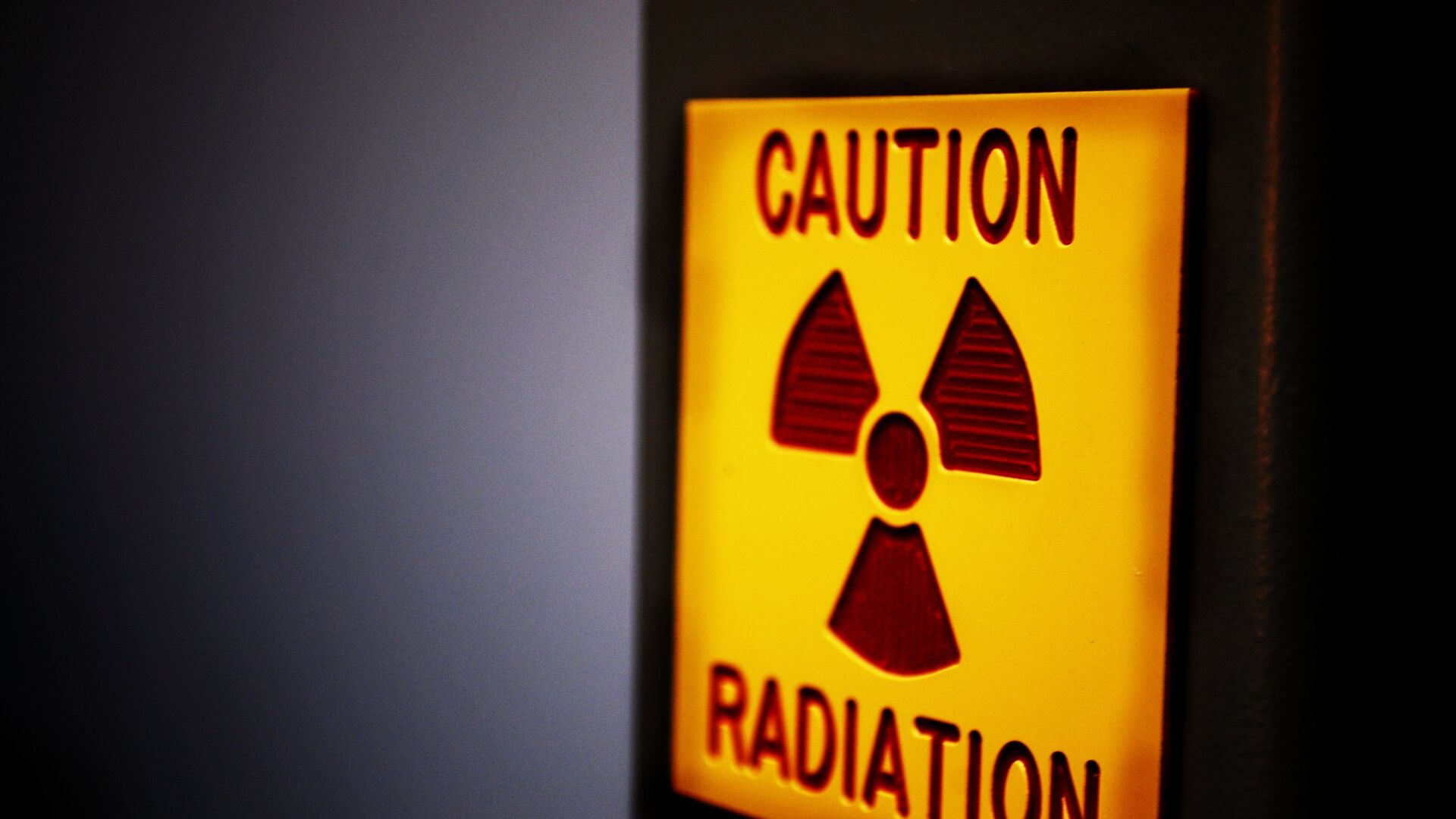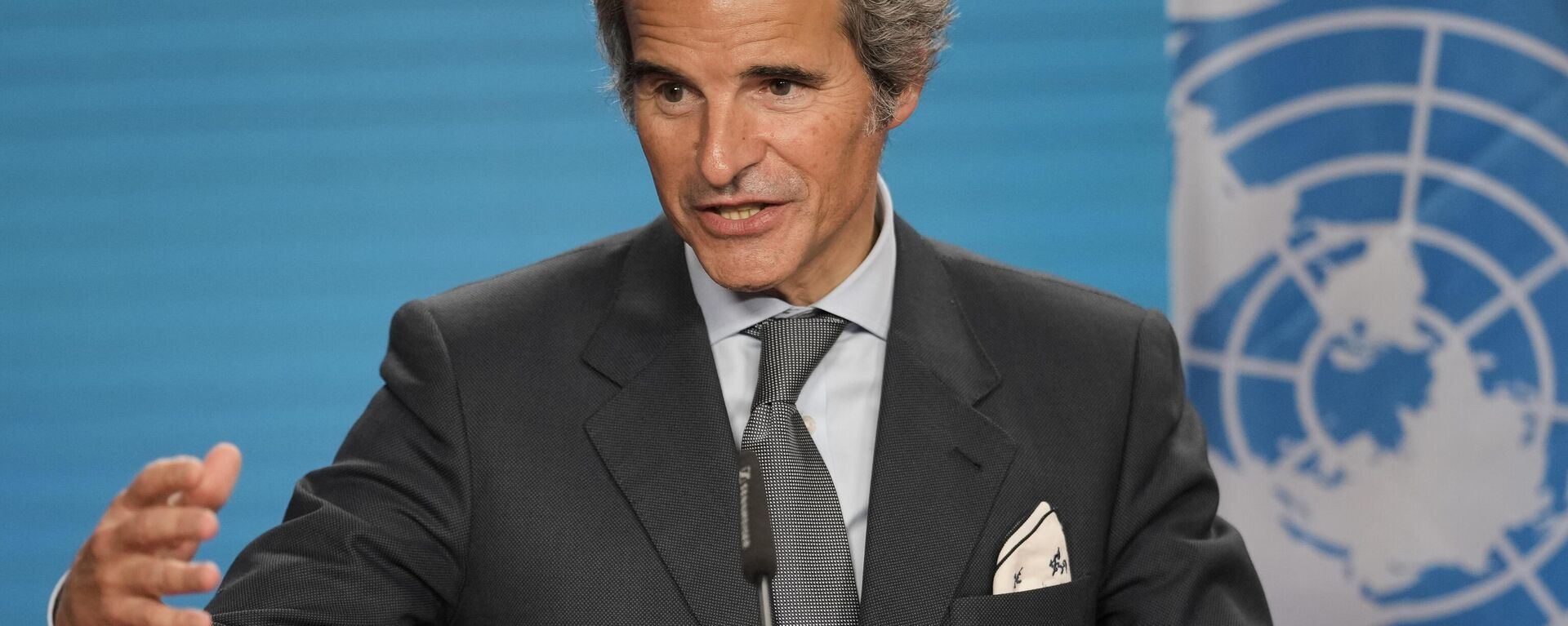https://sputnikglobe.com/20230824/fukushima-very-dangerouscauses-genetic-damage-at-tiny-conventional-doses--1112839265.html
Nuclear Expert: Tritium in Fukushima Wastewater 'Very Dangerous, Causes 'Genetic Damage'
Nuclear Expert: Tritium in Fukushima Wastewater 'Very Dangerous, Causes 'Genetic Damage'
Sputnik International
The Tritium contained in filtered cooling water from the Fukushima nuclear site is very dangerous, causes genetic damage, nuclear expert Dr. Christopher Busby told Sputnik.
2023-08-24T09:40+0000
2023-08-24T09:40+0000
2023-08-25T11:47+0000
analysis
fukushima daiichi nuclear power plant
2011 fukushima disaster
fukushima
https://cdn1.img.sputnikglobe.com/img/19381/67/193816708_0:44:2896:1673_1920x0_80_0_0_e4c490380a6a915b03d1d748dcc7d535.jpg
The tritium contained in filtered cooling water from the Fukushima nuclear site is very dangerous, renowned nuclear expert Dr. Christopher Busby told Sputnik.After months of controversy, Japan earlier announced that it would begin the release of over a million metric tons of treated, highly-diluted radioactive water from the crippled Fukushima Nuclear Power Plant (NPP) into the Pacific Ocean on August 24. The decision was made regardless of a torrent of criticism from the local population, the international humanitarian community, as well as vehement objections from China and other neighbors in the region. The plan to release the water had been in the wind for years. Back in 2019, Japan's authorities had warned that they were running out of space to store the material.Tritium is a radioactive isotope of hydrogen. While it is produced naturally from interactions of cosmic rays with gases in the upper atmosphere, it is also a by-product of nuclear reactors. Tritium possesses the same number of protons and electrons as hydrogen, but unlike regular hydrogen, which does not have any neutrons, tritium has two. Thus, it is both unstable and radioactive.According to Fukushima Nuclear Power Plant operator Tokyo Electric Power Company (TEPCO), the released wastewater will be heavily diluted with clean water, leaving it containing only very low concentrations of radioactive material. The dumped water will ostensibly travel through an undersea tunnel about one kilometer (0.62 miles) off the coast, until it reaches the Pacific Ocean. Both during the discharge and afterwards, the entire process is reported to be monitored by third parties, including the United Nations nuclear watchdog, the International Atomic Energy Agency (IAEA), for years to come.'Regulators Are Wrong'While the Japanese (also the International Atomic Energy Agency, and a long list of self-identified experts) collectively say: "no problems, the quantities are very small and pose no risk to health, neither to people nor marine life," this is not the case, according to Christopher Busby.“Tritium is interesting stuff. Its radioactivity is extremely weak: it emits a very short-range beta electron and itself then changes into Helium 3… In terms of radioactivity, because the decay electron is so weak, the method that the risk agencies use to quantify radiation effects has classed tritium as almost a non-event, in terms of health effects. This is most convenient for the nuclear industry, as it means that the exposure limits for tritium (in terms of Becquerels per liter) are truly enormous, when compared with other radioactive waste," the nuclear expert clarified.The expert recalled that years ago, the regulator BEIR committee in the US, led by Prof. Karl Z. Morgan, made an unsuccessful attempt to change the limits for tritium, which he was convinced was a serious hazard. He was overruled because it would have made the operation of nuclear power very difficult. “The water in the tanks contains about 1500Bq/liter. A Becquerel is one decay per second. A liter of this water would produce 1,500 clicks on a suitable measuring instrument… Would you drink this water? Even if the IAEA say it’s OK?” queried the scientist.While a plethora of experts have been rounded up to say that “this stuff has never shown any health effects in places where it is poured into the sea,” Busby pointed out, they are wrong. The expert, who spent years of research looking at the effects of releasing radionuclides, including tritium, to the sea, cited his studies in the late 1990s looking at cancer and child leukemia near the Irish Sea. Similar studies, from 1999 to 2006, showed a close to 30 percent increase in cancer near the Bristol Channel, where there are also significant quantities of tritium, the expert stated, also citing research by Professor Awadhesh Jha showing that very small amounts of tritium have “profound effects on chromosomes and on development” of marine invertebrates.Physical chemist Christopher Busby was also an expert witness on a case in South Korea, asked to advise the country's parliament on the health effects of tritium. "The Koreans use the Canadian CANDU reactors which emit huge amounts of tritium; there is a big cancer cluster around these sites," he added. He also recalled being told by a colleague from Germany in 1998 that tritiated water has a much higher freezing point than ordinary water. "So, when a fog appears as the air temperature drops, the initial fog is a pure tritiated water vapor," the scientist pointed out.Valid Concerns A torrent of criticism has accompanied Tokyo's move. Some of the most vehement protests have come from China, which decided to ban imports of goods from Japan's 10 prefectures to “prevent radioactive Japanese products from being shipped to China and ensure safety of imported production for Chinese consumers," as per the Chinese General Administration of Customs. Beijing said it would also increase control of sea food products from other areas in Japan and start checking all goods coming in from that country for radioactivity. China’s Foreign Ministry spokesman Wang Wenbin accused Tokyo of being “extremely selfish and irresponsible” by pressing ahead with the disposal of the water, adding that the ocean should be treated as a common good for humanity, “not a sewer for Japan’s nuclear-contaminated water.”South Korean activists have been protesting against Japan’s plan to release treated radioactive water from the tsunami-wrecked Fukushima Nuclear Power Plant into the ocean. Opposition Democratic Party leader Lee Jae-myung said they intend to hold the government of South Korean President Yoon Suk-yeol responsible for "failing to do its duties." Lee slammed Japan's plan to discharge water from the Fukushima plant as an act of "terror."Local fishing groups and UN human rights experts have voiced their concerns about the potential threat to the marine environment and public health. However, Tokyo was not to be swayed. Japanese Prime Minister Fumio Kishida vowed that the "issue of discharging water treated in the ALPS [Advanced Liquid Processing System] system cannot be postponed," as he addressed reporters on the heels of the trilateral US-Japan-South Korea summit at Camp David. The summit came amid a rapidly deteriorating security situation in Asia, with the Biden administration drumming up allies to "contain" China, so it's hardly surprising that both Washington and official Seoul have refrained from joining the chorus of voices slamming the Fukushima radioactive wastewater release. The US voiced confidence that the government of Japan had “set up a very rigorous process… and weighed all the options and the effects." Washington claimed that its ally had been “very transparent about the decision and the process.”Moscow has also urged Tokyo to be more transparent about its actions regarding the release of radioactive water from the Fukushima Nuclear Power Plant into the ocean, actions that “may pose a radiation threat,” Russian Foreign Ministry spokeswoman Maria Zakharova said at a briefing. Zakharova noted that Japan should have answered the questions sent to it by Russia and China regarding the dumping of radioactive water, as well as provided full access to all information of interest and to water sampling.
https://sputnikglobe.com/20230824/japan-starts-dumping-wastewater-from-fukushima-npp-into-pacific-ocean---reports-1112839135.html
https://sputnikglobe.com/20230823/activists-flood-seouls-streets-to-oppose-release-of-fukushima-radioactive-wastewater-1112819427.html
https://sputnikglobe.com/20230707/china-partially-bans-imports-from-japan-due-to-fukushima-water-discharge-plan-1111713254.html
https://sputnikglobe.com/20230707/nuclear-power-lapdog-iaea-to-suffer-reputational-blow-for-fukushima-wastewater-release-1111728525.html
fukushima
Sputnik International
feedback@sputniknews.com
+74956456601
MIA „Rossiya Segodnya“
2023
News
en_EN
Sputnik International
feedback@sputniknews.com
+74956456601
MIA „Rossiya Segodnya“
Sputnik International
feedback@sputniknews.com
+74956456601
MIA „Rossiya Segodnya“
fukushima wastewater, 2011 fukushima disaster, japan's release of radioactive water from fukushima npp, japanese prime minister fumio kishida, protests in south korea, dumping wastewater from the plant into the pacific ocean, tritium contained in filtered cooling water from the fukushima nuclear site
fukushima wastewater, 2011 fukushima disaster, japan's release of radioactive water from fukushima npp, japanese prime minister fumio kishida, protests in south korea, dumping wastewater from the plant into the pacific ocean, tritium contained in filtered cooling water from the fukushima nuclear site
Nuclear Expert: Tritium in Fukushima Wastewater 'Very Dangerous, Causes 'Genetic Damage'
09:40 GMT 24.08.2023 (Updated: 11:47 GMT 25.08.2023) As Fukushima Nuclear Power Plant operator the Tokyo Electric Power Company (TEPCO) has reportedly begun dumping wastewater from the plant into the Pacific Ocean, physical chemist Dr. Christopher Busby has taken a look at the legitimate concerns of other countries in the region, as well as the arguments being wielded to assuage these fears.
The tritium contained in
filtered cooling water from the Fukushima nuclear site is very dangerous, renowned nuclear expert Dr.
Christopher Busby told
Sputnik."It gets inside you easily. It exchanges with normal hydrogen, sometimes it becomes organically (covalently) bound. It causes genetic damage at tiny conventional doses (calculated using the energy per unit mass, joule/kg formula of the International Commission on Radiological Protection, employed by the IAEA)," said Busby.
After months of controversy, Japan earlier announced that it would
begin the release of over a million metric tons of treated, highly-diluted radioactive water from the crippled Fukushima Nuclear Power Plant (NPP) into the Pacific Ocean on August 24. The decision was made regardless of
a torrent of criticism from the local population, the international humanitarian community, as well as vehement objections from China and other neighbors in the region. The plan to release the water had been in the wind for years. Back in 2019, Japan's authorities had warned that they were running out of space to store the material.
“The water has apparently been treated to remove the radioisotopes that the regulators believe pose the greatest risk, strontium-90, caesium-137, and carbon-14. But to take out the tritium is too expensive, and so the radioactive water is largely contaminated with large amounts of tritium oxide, in the form of tritiated water HTO.
Tritium is the largest contaminant in terms of radioactivity, disintegrations per second, clicks on a counter, from the operation of all nuclear energy processes. The neutrons, which are central to nuclear energy, produce tritium by various processes in reactors, and even outside reactors, where the nuclide, a radioactive form of Hydrogen, is formed by adding neutrons to water and various other processes,” Christopher Busby, physical chemist and scientific secretary of the European Committee on Radiation Risk, explained.
Tritium is a radioactive isotope of hydrogen. While it is produced naturally from interactions of cosmic rays with gases in the upper atmosphere, it is also a by-product of nuclear reactors. Tritium possesses the same number of protons and electrons as hydrogen, but unlike regular hydrogen, which does not have any neutrons, tritium has two. Thus, it is both unstable and radioactive.
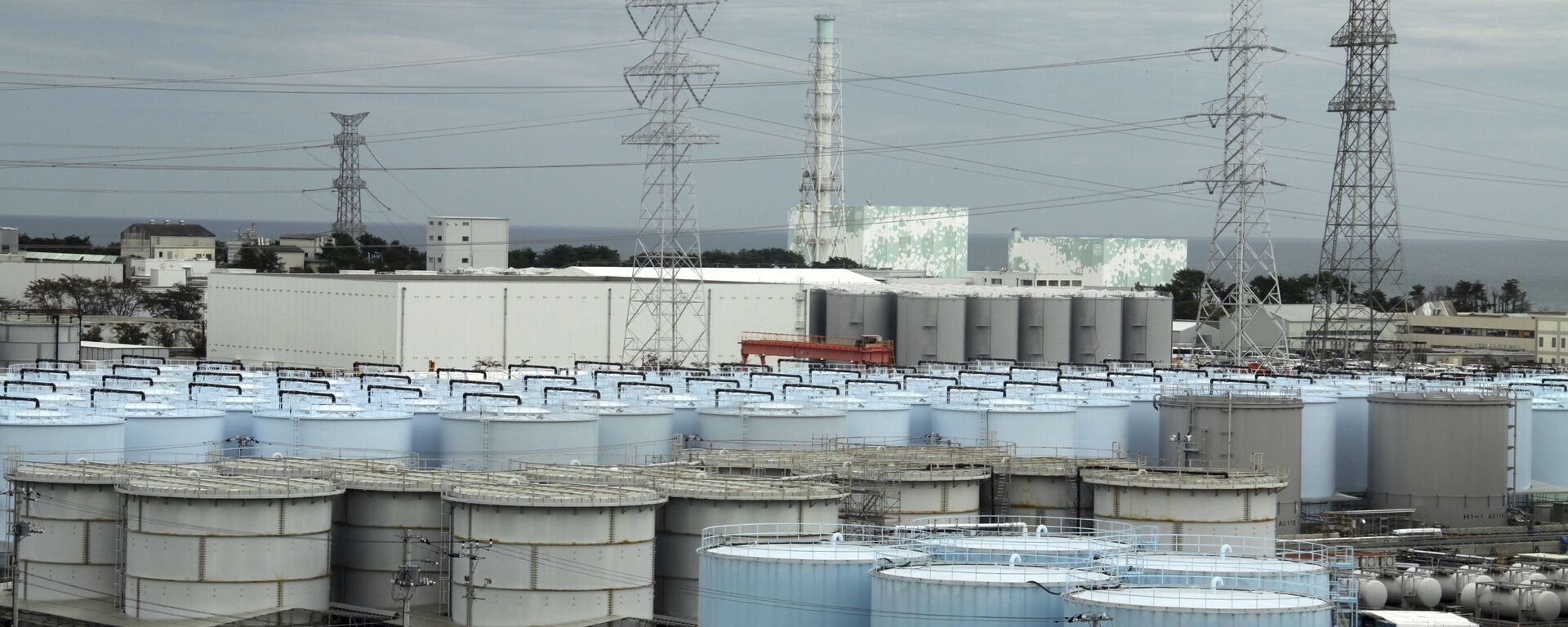
24 August 2023, 04:43 GMT
According to Fukushima Nuclear Power Plant operator Tokyo Electric Power Company (TEPCO), the released wastewater will be heavily diluted with clean water, leaving it containing only very low concentrations of radioactive material. The dumped water will ostensibly travel through an undersea tunnel about one kilometer (0.62 miles) off the coast, until it reaches the Pacific Ocean. Both during the discharge and afterwards, the entire process is reported to be monitored by third parties, including the United Nations nuclear watchdog, the International Atomic Energy Agency (IAEA), for years to come.
While the Japanese (also the International Atomic Energy Agency, and a long list of self-identified experts) collectively say: "no problems, the quantities are very small and pose no risk to health, neither to people nor marine life," this is not the case, according to Christopher Busby.
“Tritium is interesting stuff. Its radioactivity is extremely weak: it emits a very short-range beta electron and itself then changes into Helium 3… In terms of radioactivity, because the decay electron is so weak, the method that the risk agencies use to quantify radiation effects has classed tritium as almost a non-event, in terms of health effects. This is most convenient for the nuclear industry, as it means that the exposure limits for tritium (in terms of Becquerels per liter) are truly enormous, when compared with other radioactive waste," the nuclear expert clarified.
“The low beta energy of tritium allows the regulators to argue that the releases of huge amounts to the sea and rivers is safe. But the regulators are wrong. The system of analysis using the concept of 'Absorbed Dose' is unscientific, dishonest and at the origin of a huge historic public health scandal that has caused hundreds of millions of deaths from cancer due to badly regulated releases of certain specific contaminants, and this includes tritium, carbon-14, uranium (as particles) and certain other substances produced by nuclear processes,” Dr. Busby explained.
The expert recalled that years ago, the regulator BEIR committee in the US, led by Prof. Karl Z. Morgan, made an unsuccessful attempt to change the limits for tritium, which he was convinced was a serious hazard. He was overruled because it would have made the operation of nuclear power very difficult.
“The water in the tanks contains about 1500Bq/liter. A Becquerel is one decay per second. A liter of this water would produce 1,500 clicks on a suitable measuring instrument… Would you drink this water? Even if the IAEA say it’s OK?” queried the scientist.
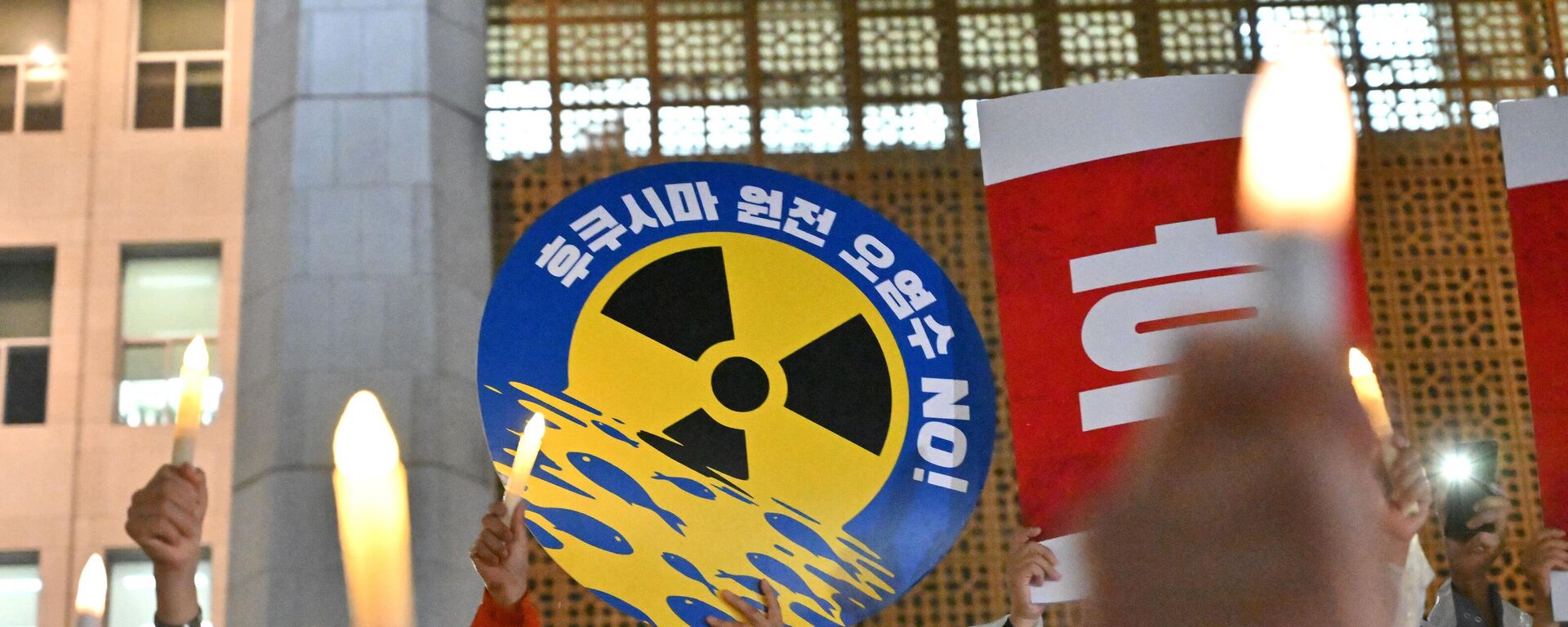
23 August 2023, 13:58 GMT
While a plethora of experts have been rounded up to say that “this stuff has never shown any health effects in places where it is poured into the sea,” Busby pointed out, they are wrong. The expert, who spent years of research looking at the effects of releasing radionuclides, including tritium, to the sea, cited his studies in the late 1990s looking at cancer and child leukemia near the Irish Sea.
“Tritium is measured in surface water. This water is driven inshore to be inhaled by populations living within 1 km of the sea. The radionuclides concentrate in the coastal sediment which is also driven ashore. You find the tritium in fish, in shellfish, in blackberries, everywhere near the Irish Sea, near the Bristol Channel. My Irish Sea study looked at small areas of Wales between 1974 and 1990 and found a clear and significant sea coast effect on cancer, particularly childhood cancer," Christopher Busby recalled.
Similar studies, from 1999 to 2006, showed a close to 30 percent increase in cancer near the Bristol Channel, where there are also significant quantities of tritium, the expert stated, also citing research by Professor Awadhesh Jha showing that very small amounts of tritium have “profound effects on chromosomes and on development” of marine invertebrates.
Physical chemist Christopher Busby was also an expert witness on a case in South Korea, asked to advise the country's parliament on the health effects of tritium. "The Koreans use the Canadian CANDU reactors which emit huge amounts of tritium; there is a big cancer cluster around these sites," he added. He also recalled being told by a colleague from Germany in 1998 that tritiated water has a much higher freezing point than ordinary water. "So, when a fog appears as the air temperature drops, the initial fog is a pure tritiated water vapor," the scientist pointed out.
"Those people living near the east coast of Japan, especially the estuaries, need to watch out. Don’t eat anything from the sea, or inside 1 km from the coast. The radiation risk model that regulates tritium is obsolete and wildly incorrect. The experts that say there are no effects in populations living near tritium contamination need to look out of the window," Dr. Busby warned.
A
torrent of criticism has accompanied Tokyo's move. Some of the most vehement protests have come from China, which decided to ban imports of goods from Japan's 10 prefectures to “
prevent radioactive Japanese products from being shipped to China and ensure safety of imported production for Chinese consumers," as per the Chinese General Administration of Customs. Beijing said it would also increase control of sea food products from other areas in Japan and start checking all goods coming in from that country for radioactivity. China’s Foreign Ministry spokesman Wang Wenbin accused Tokyo of being “
extremely selfish and irresponsible” by pressing ahead with the disposal of the water, adding that the ocean should be treated as a common good for humanity, “
not a sewer for Japan’s nuclear-contaminated water.”
South Korean activists have been protesting against Japan’s plan to release treated radioactive water from the tsunami-wrecked Fukushima Nuclear Power Plant into the ocean. Opposition Democratic Party leader Lee Jae-myung said they intend to hold the government of South Korean President Yoon Suk-yeol responsible for "failing to do its duties." Lee slammed Japan's plan to discharge water from the Fukushima plant as an act of "terror."
Local fishing groups and UN human rights experts have voiced their concerns about the potential threat to the marine environment and public health.
However, Tokyo was not to be swayed. Japanese Prime Minister Fumio Kishida vowed that the "issue of discharging water treated in the ALPS [Advanced Liquid Processing System] system cannot be postponed," as he addressed reporters on the heels of the trilateral US-Japan-South Korea summit at Camp David.
The summit came amid a rapidly deteriorating security situation in Asia, with the Biden administration drumming up allies to "contain" China, so it's hardly surprising that both Washington and official Seoul have refrained from joining the chorus of voices slamming the Fukushima radioactive wastewater release. The US voiced confidence that the government of Japan had “
set up a very rigorous process… and weighed all the options and the effects." Washington claimed that its ally had been “
very transparent about the decision and the process.”
Moscow has also urged Tokyo to be more transparent about its actions regarding the release of radioactive water from the Fukushima Nuclear Power Plant into the ocean, actions that “may pose a radiation threat,” Russian Foreign Ministry spokeswoman Maria Zakharova said at a briefing. Zakharova noted that Japan should have answered the questions sent to it by Russia and China regarding the dumping of radioactive water, as well as provided full access to all information of interest and to water sampling.
“Japan should provide all necessary information to the sides concerned, up to the possibility of taking environmental samples at the dumping site. The company that operated this station was repeatedly found to be inconsistent with the information it provided," the Foreign Ministry spokeswoman added.
The Fukushima nuclear disaster occurred on March 11, 2011. The plant was heavily damaged following a magnitude 9 earthquake in the Pacific Ocean, which triggered a massive tsunami. This, in turn, caused three nuclear reactors to melt down. The accident resulted in widespread contamination of local soil and water. The disaster left 22,200 people dead or missing. In the years that followed, some 1.33 million cubic meters of contaminated water ended up being accumulated at the plant - water used to cool the damaged reactors, as well as rainwater and groundwater that seeped into the site.
